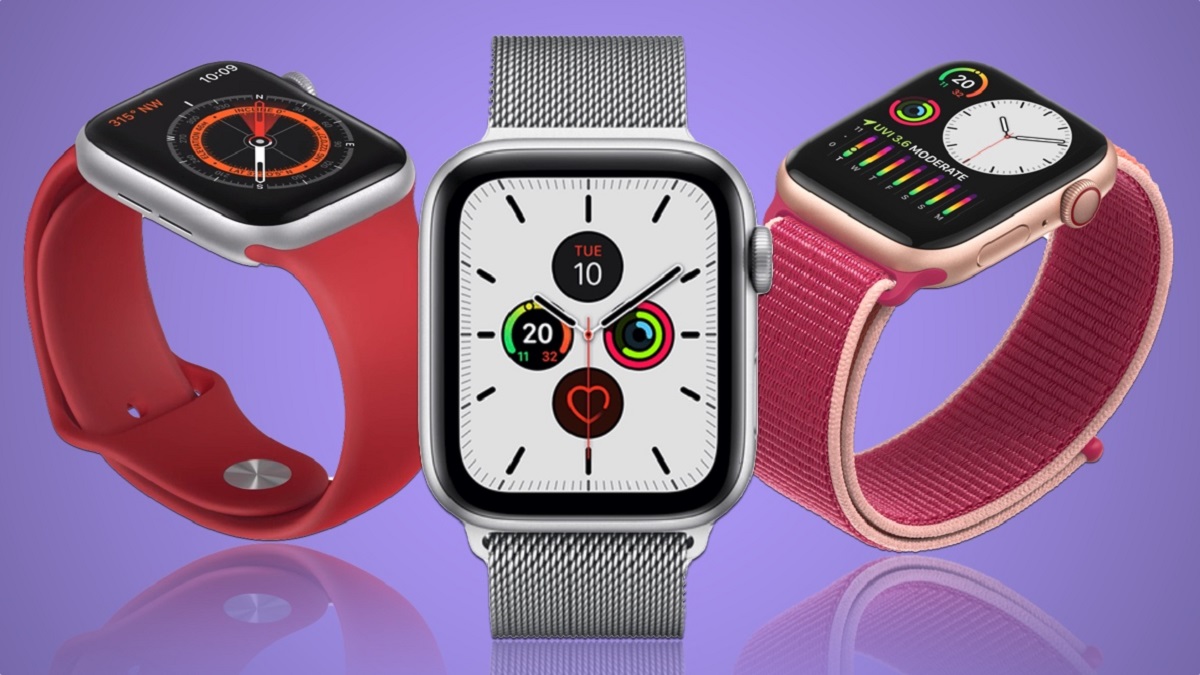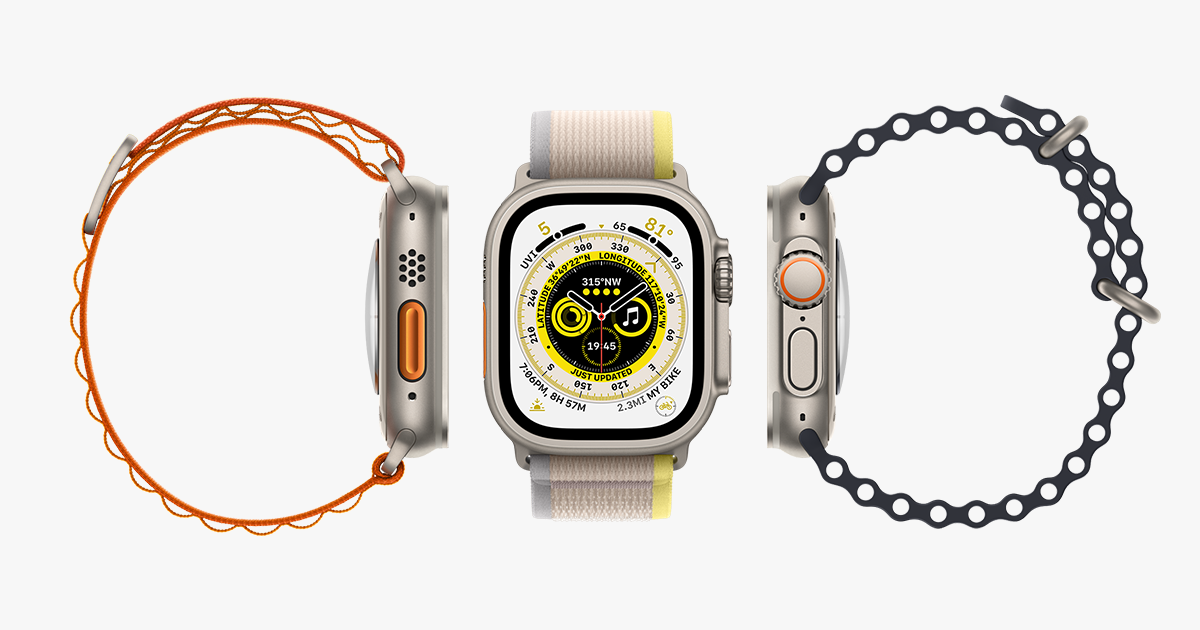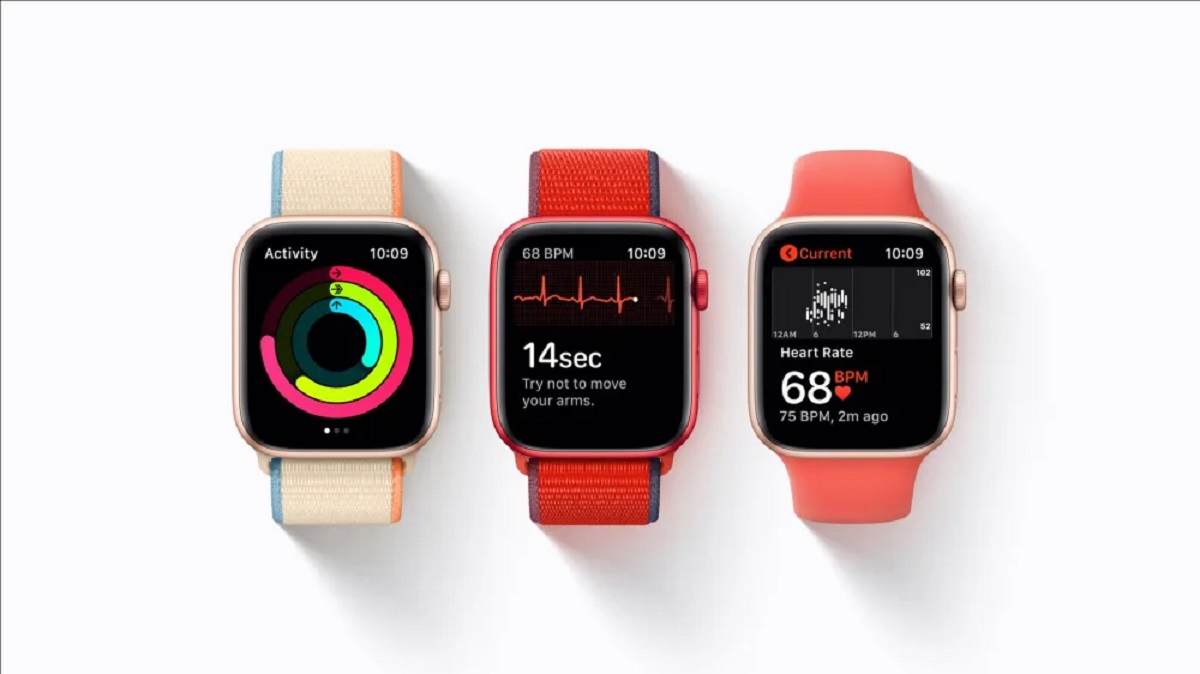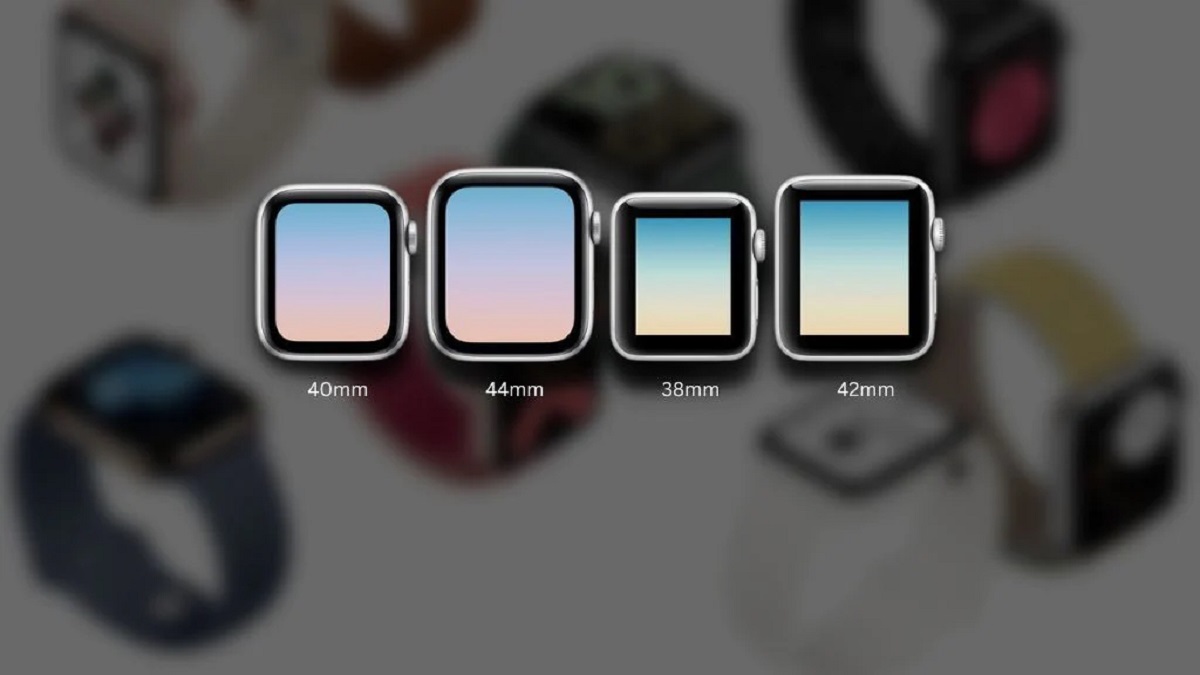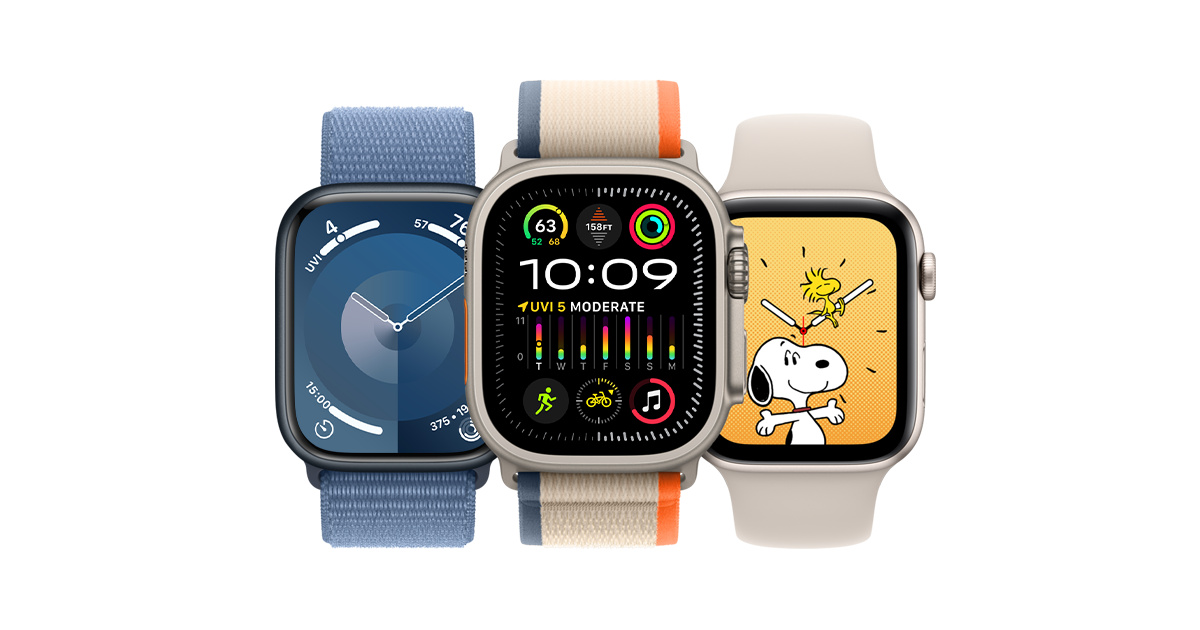How Can I Tell What Apple Watch I Have
With several generations and models of the Apple Watch available, it can sometimes be confusing to determine exactly which one you own. However, there are a few key identifiers that can help you identify your Apple Watch model. By checking the model number, examining the design and features, considering the case material and display, and consulting the Apple Watch app, you can easily determine what Apple Watch you have.
The first step is to check the model number. On the back of your Apple Watch, you’ll find a series of alphanumeric characters engraved. This is the model number that can give you important information about your device. You can visit the Apple website and use their model number checker to match your model number with the corresponding Apple Watch version.
Another way to identify your Apple Watch is by looking at its series. Apple has released multiple series of the Apple Watch, with each series representing a new generation of the device. You can find the series information on the packaging or by checking the About section in the General settings on your Apple Watch.
Comparing the features of your Apple Watch with the specifications provided by Apple can also help determine the model you have. Each Apple Watch series comes with its own unique set of features, such as GPS, cellular capabilities, or specific health sensors. By familiarizing yourself with the features of each series, you can easily identify which Apple Watch you own.
Examining the design of your Apple Watch can also provide clues about the model you have. Apple has introduced different case sizes, finishes, and band options throughout the years. By comparing the design elements of your Apple Watch with the available options, you can narrow down the possibilities.
Checking the case material is another useful indicator. Apple offers various case materials for different Apple Watch models, including aluminum, stainless steel, titanium, and ceramic. The case material can give you a hint about the series and edition of your Apple Watch.
Take a close look at the display of your Apple Watch. Apple has made improvements to the display technology with each iteration. If you have an OLED display, your Apple Watch is likely newer than devices with previous display technologies.
Consider the compatibility of your Apple Watch with software updates and accessories. Each Apple Watch series has its own limitations regarding the latest watchOS updates and accessory compatibility. Checking for updates on your Apple Watch or consulting the Apple website can help you determine the series and model you have.
Lastly, the Apple Watch app on your iPhone can provide valuable information about your Apple Watch. Open the Apple Watch app, navigate to the My Watch tab, and select General > About to find details about your device, including the model name and number.
By following these steps and using the provided identifiers, you can easily identify what Apple Watch you have. Knowing your Apple Watch model is essential when seeking support, purchasing accessories, or exploring software updates specific to your device.
Introduction
The Apple Watch has become a popular accessory for tech-savvy individuals and fitness enthusiasts alike. With its sleek design, innovative features, and seamless integration with other Apple devices, it’s no wonder that more and more people are sporting this smart wearable on their wrists. However, with different generations and models available, it can be challenging to determine exactly which Apple Watch you have.
Whether you’re looking to upgrade, sell, or troubleshoot your Apple Watch, knowing the exact model is crucial. Each generation of Apple Watch brings new capabilities, improvements, and design elements that differentiate it from its predecessors. In this article, we’ll guide you through the process of identifying the Apple Watch model you own.
One of the first steps in determining your Apple Watch model is by checking the model number engraved on the back of your device. The model number can provide valuable information to help you identify your Apple Watch and distinguish it from other models. By visiting the Apple website and using their model number checker, you can easily match your model number with the specific Apple Watch version.
Another indicator of your Apple Watch model is the series it belongs to. Apple has released several series of the Apple Watch, with each series representing a new generation of the device. The series information can usually be found on the packaging or by navigating to the About section in the General settings on your Apple Watch.
Comparing the features of your Apple Watch with the specifications provided by Apple can also help in determining the exact model you have. Each series of the Apple Watch introduces its own unique set of features, such as built-in GPS, cellular capabilities, or advanced health sensors. By familiarizing yourself with the different features of each series, you can narrow down which Apple Watch you own.
The design of your Apple Watch can also give you a clue about the model you have. Apple has introduced various case sizes, finishes, and band options throughout the years. By comparing the design elements of your Apple Watch with the available options, you can further narrow down the possibilities.
Furthermore, the case material can be another useful indicator of your Apple Watch model. Apple offers different case materials, including aluminum, stainless steel, titanium, and ceramic, which can vary depending on the series and edition of the Apple Watch. The case material can provide insight into the specific model you have.
Examining the display of your Apple Watch can also play a role in identifying the model. Apple has made improvements to the display technology with each iteration, and newer models often feature OLED displays. By checking the display technology of your Apple Watch, you can get a better understanding of the model you own.
Considering the compatibility of your Apple Watch with software updates and accessories is another important factor. Apple Watch models have certain limitations when it comes to the latest watchOS updates and compatibility with accessories. Checking for updates on your Apple Watch or consulting the Apple website can help you determine the exact series and model you have.
Lastly, the Apple Watch app on your iPhone can provide valuable information about your device. By opening the Apple Watch app, navigating to the My Watch tab, and selecting General > About, you can find detailed information about your Apple Watch, including the model name and number.
By following these steps and utilizing the provided identifiers, you’ll be able to confidently determine what Apple Watch model you own. Knowing your specific model is essential when seeking support, purchasing accessories, or exploring software updates tailored to your device.
Checking the Model Number
One of the most reliable ways to determine the exact model of your Apple Watch is by checking the model number engraved on the back of the device. The model number is a unique identifier that can provide valuable information about your Apple Watch and help you distinguish it from other models.
To locate the model number, turn your Apple Watch over and look for a series of alphanumeric characters engraved on the back. This model number is typically small and can be a bit difficult to read without proper lighting or a magnifying glass. Take your time to carefully examine and note down the model number.
Once you have the model number in hand, visit the official Apple website and navigate to their model number lookup tool. This tool allows you to enter your specific model number and instantly identify the corresponding Apple Watch version. It will provide you with details such as the series, size, material, and other specifications of your Apple Watch.
By using the Apple model number lookup tool, you can quickly determine the exact model and generation of your Apple Watch. This information is particularly useful when seeking support, purchasing accessories, or exploring software updates that are specific to your device.
It is important to note that the model number may vary depending on the region or country where your Apple Watch was purchased. Therefore, it is recommended to use the official Apple model number lookup tool to ensure accurate results.
Furthermore, if you find it challenging to locate the model number on the back of your Apple Watch or if it is not easily visible, you can also use the Apple Watch app on your iPhone to find this information. Simply open the Apple Watch app, go to the My Watch tab, and select General > About. Here, you will find the model name and number listed.
Checking the model number is the simplest and most accurate way to identify your Apple Watch model. By using the official Apple model number lookup tool or consulting the Apple Watch app, you can confidently determine the specific model and generation of your Apple Watch.
Identifying the Apple Watch Series
Apple has released several series of the Apple Watch, each representing a new generation of the device with its own unique features and improvements. Identifying the series of your Apple Watch can provide you with valuable information to determine the specific model and generation.
The series information can typically be found on the packaging of your Apple Watch. Look for the label or logo that indicates the series number. This can help you identify whether you have the original series, series 1, series 2, series 3, series 4, series 5, series 6, or the latest series 7.
If you no longer have the original packaging or are unsure of the series, you can check within the settings on your Apple Watch. Open the Settings app on your Apple Watch and navigate to General > About. Look for the “Model” or “Series” information. It will indicate the specific series, such as “Apple Watch Series 6” or “Apple Watch Series 5.”
In addition, comparing the design and features of your Apple Watch with those of each series can also help you identify which series you have. Check the Apple website or official Apple documentation for details on the features and design changes made with each series. This includes improvements in processing power, battery life, display technology, health tracking capabilities, and more.
It’s worth noting that the Apple Watch Series 7 introduced significant design changes, including a larger and more rounded display, as well as faster charging. If your Apple Watch has these design elements, it is likely from the latest series.
Knowing the specific series of your Apple Watch is important when seeking support, purchasing accessories, or exploring software updates. Each series may have different software requirements, compatibility with accessories, and unique features tailored to that particular generation.
By examining the packaging, checking the settings on your Apple Watch, and comparing the design and features, you can easily identify the series of your Apple Watch and gain a better understanding of its capabilities and compatibility.
Comparing the Features
Each series of the Apple Watch comes with its own set of features and advancements, making it easier to differentiate between models. By comparing the features of your Apple Watch with the specifications provided by Apple, you can determine the specific model you have.
Start by familiarizing yourself with the features introduced in each Apple Watch series. Visit the Apple website or refer to official Apple documentation to understand what features were added or improved upon in each generation. This includes features like built-in GPS, cellular connectivity, advanced health tracking sensors, ECG capability, water resistance, and more.
Once you have an understanding of the features, compare them to what your Apple Watch offers. For example, if your Apple Watch has built-in GPS and cellular connectivity, you likely have a later series, such as Series 3 or higher. If it lacks these features, it may be an earlier generation.
Consider specific health and fitness features as well. For instance, Apple introduced an SpO2 sensor in Series 6 that measures blood oxygen levels. If your Apple Watch includes this sensor, it indicates that you have a Series 6 or newer. Additionally, advancements in heart rate monitoring, workout tracking, and sleep tracking are introduced with each new series.
Take note of any unique features or capabilities that your Apple Watch may have. For instance, the Apple Watch Series 4 introduced fall detection and an electrocardiogram (ECG) feature. If your Apple Watch offers these features, it’s a clear indication of having a Series 4 or a newer model.
Compare the battery life of your Apple Watch to the estimated battery life provided by Apple for each series. Apple often improves battery performance with newer generations, so if your Apple Watch has a longer battery life, it suggests a more recent model.
Furthermore, consider software compatibility. Apple Watch models have certain limitations regarding compatibility with the latest watchOS updates. If your Apple Watch can support the latest watchOS versions, it indicates a more recent series.
By comparing the features of your Apple Watch to the known features of each series, you can narrow down which specific model and generation you have. Remember that features can vary between models and even within the same series, so it’s essential to review the complete list of features offered in each series.
Knowing the features of your Apple Watch is important for making informed decisions about software updates, selecting compatible accessories, and understanding the full capabilities of your device.
Looking at the Design
The design of the Apple Watch is another factor that can help you identify the specific model you have. Apple has made various design changes throughout the different series of the Apple Watch, including case sizes, finishes, and band options.
Start by examining the case size of your Apple Watch. The original Apple Watch came in two sizes: 38mm and 42mm. However, in later series, Apple introduced additional sizes, including 40mm and 44mm. Compare the dimensions of your Apple Watch with the available sizes for each series to determine which model you own.
Next, pay attention to the overall shape and design of your Apple Watch. The earlier models, such as the original and Series 1, had a rectangular display with curved edges. However, Apple transitioned to a more rounded and seamless design with subsequent series, including models like the Series 6 and the latest Series 7.
Consider the materials used in the construction of your Apple Watch case. Apple offers a range of options, including aluminum, stainless steel, titanium, and ceramic. Each series may have different material choices, so comparing the materials of your Apple Watch with those available for each series can help narrow down the possibilities.
Take note of any unique design elements on your Apple Watch. For instance, the Apple Watch Series 6 introduced new case colors, such as Product(RED) and blue. If your Apple Watch has these distinctive design features, it indicates that you have a Series 6 or a newer model.
Additionally, observe the style and functionality of the bands that accompany your Apple Watch. Certain bands were released with specific series, and some bands may only be compatible with certain models. Comparing your bands to the available options for each series can provide further clues about the model you own.
It’s important to note that some design elements, such as interchangeable bands, can be found across multiple Apple Watch series. Therefore, while the design is a helpful factor in identification, it should be considered alongside other indicators, such as the case size, materials, and features.
By carefully examining the design elements of your Apple Watch—such as the case size, shape, materials, unique features, and bands—you can compare them with the known design characteristics of each series to identify the specific model you own.
Understanding the design of your Apple Watch is not only helpful for identification purposes but also allows you to select compatible accessories, personalize your device, and appreciate the aesthetic choices made by Apple throughout the different series.
Checking the Case Material
Another important factor in identifying your Apple Watch model is the case material. Apple offers a variety of case materials, and each material is typically associated with specific models and series of the Apple Watch.
First, take a close look at the material of the case of your Apple Watch. Apple commonly uses materials such as aluminum, stainless steel, titanium, and ceramic for different models and series.
If your Apple Watch has an aluminum case, it is likely from the more affordable Sport or standard models. The aluminum case is lightweight and durable, making it a popular choice for everyday use.
On the other hand, if your Apple Watch has a stainless steel case, it is typically associated with higher-end models. Stainless steel cases offer a premium look and feel, providing a more luxurious option for your Apple Watch.
Apple also introduced titanium as a case material for certain series of the Apple Watch. Titanium is known for its durability and lightweight properties. If your Apple Watch has a titanium case, it is most likely from the higher-end or special edition models.
For those seeking a truly luxurious option, the ceramic case is available for certain models and editions. Ceramic cases are scratch-resistant and offer a sleek and elegant design. If your Apple Watch has a ceramic case, it indicates that you have a premium model from a specific series or edition.
Comparing the case material of your Apple Watch with the available options for each series can help narrow down the choices. Apple’s website or official documentation can provide information on which case materials were used for each series.
It’s important to note that the case material alone may not be enough to determine the exact model and series of your Apple Watch. However, in combination with other identifiers such as the design, features, and case size, the case material can play an important role in the identification process.
By checking the case material of your Apple Watch and comparing it with the available options for each series, you can gain valuable insight into the specific model and series you own, helping you make informed decisions about compatibility, software updates, and accessories.
Examining the Display
The display of your Apple Watch can provide valuable clues when it comes to identifying the specific model you have. Apple has made advancements in display technology with each series, introducing new features and improvements.
Start by examining the type of display on your Apple Watch. Older models may have an LCD display, while newer models often feature an OLED (organic light-emitting diode) display. OLED displays offer improved color reproduction, contrast, and overall visual quality compared to LCD displays. If your Apple Watch has an OLED display, it suggests a more recent model.
Consider the resolution and pixel density of your Apple Watch’s display. Apple has continuously increased the resolution and pixel density with each new series, resulting in a crisper and more detailed display. If your Apple Watch has a higher resolution and pixel density, it indicates a more recent model.
Examine the overall size and shape of the display. Apple has made slight changes to the display size and shape throughout the different series. Compare the dimensions of your Apple Watch’s display with the available sizes for each series to help narrow down the possibilities.
Additionally, take note of any unique display features that your Apple Watch may have. For example, the Apple Watch Series 5 introduced an always-on display, allowing the screen to remain visible at all times without the need to raise your wrist. If your Apple Watch has this feature, it indicates that you have at least a Series 5 or a newer model.
Another important aspect to consider is the brightness and visibility of the display, particularly in different lighting conditions. Apple has made improvements in display brightness and visibility with each new series. If your Apple Watch has a brighter display with better visibility in bright sunlight, it suggests a more recent model.
It’s worth mentioning that some display features, such as the always-on display, may be available on multiple series. Therefore, it’s important to combine the examination of the display with other identification factors, such as the case material, features, and design elements.
By examining the display of your Apple Watch and comparing it with the known display characteristics of each series, you can narrow down which specific model and generation you have. Understanding the display technology of your Apple Watch is not only helpful for identification purposes but also for appreciating the visual experience and the advancements Apple has made in each series.
Considering Compatibility
When trying to identify your Apple Watch model, it is crucial to consider its compatibility with various factors, including software updates and accessories. Each series of the Apple Watch has its own limitations and requirements, which can help determine the specific model you have.
Start by checking the compatibility of your Apple Watch with the latest watchOS updates. Apple regularly releases updates to its watchOS operating system, but certain models may not be able to support the latest versions. Visit the Apple website or check the settings on your Apple Watch to see which watchOS version your device supports. If your Apple Watch can install and run the latest watchOS updates, it is likely from a more recent series.
Similarly, consider the compatibility of your Apple Watch with third-party apps. Some app developers may no longer support older Apple Watch models due to hardware and software limitations. If you are still able to install and use a wide range of apps on your Apple Watch, it suggests a more recent model in terms of compatibility.
Another aspect to consider is the compatibility of your Apple Watch with various accessories. Apple offers a wide range of bands, charging docks, and other accessories specifically designed for the Apple Watch. Some accessories may be compatible only with certain models or series. If your Apple Watch is compatible with a wide variety of bands and accessories, it indicates a more recent model with broader compatibility.
Check for any unique compatibility features that your Apple Watch may have. For example, the Apple Watch Series 4 and newer models feature an ECG (electrocardiogram) app that allows you to take an electrocardiogram reading right on your wrist. If your Apple Watch is compatible with the ECG app, it suggests a Series 4 or newer model.
Finally, consider the compatibility of your Apple Watch with other Apple devices, such as iPhones and iPads. Newer series of the Apple Watch may require newer versions of iOS and specific device models for seamless pairing and enhanced functionality. If your Apple Watch is compatible with the latest iOS and pairs well with your other Apple devices, it indicates a more recent model.
By considering the compatibility of your Apple Watch with software updates, third-party apps, accessories, and other Apple devices, you can gather important clues about the specific model and series you own. Understanding the compatibility of your Apple Watch is essential when seeking support, exploring new features, and ensuring seamless integration with other devices and accessories.
Consult the Apple Watch App
If you’re still unsure about the model of your Apple Watch, one of the easiest ways to find out is by consulting the Apple Watch app on your iPhone. The Apple Watch app provides valuable information and details about your device, including the model name and number.
To access the Apple Watch app, ensure that your iPhone is paired with your Apple Watch. Open the app, which is pre-installed on iPhones running iOS 14 or later, and navigate to the “My Watch” tab at the bottom of the screen.
Once you’re in the “My Watch” tab, select “General” and then tap on “About.” In this section, you’ll find various details about your Apple Watch, including the model name, model number, serial number, software version, and other relevant information.
The model name and number listed in the Apple Watch app will help you identify the specific series and model you own. Note down the model number and use it to cross-reference with the official Apple website or utilize their model number lookup tool for accurate identification.
Additionally, the “About” section in the Apple Watch app provides a wealth of other information, such as the serial number, which can be useful for registering and verifying your device. It also displays the software version currently installed on your Apple Watch, allowing you to ensure that you’re running the latest updates.
It’s worth noting that the Apple Watch app also provides access to various settings, customization options, and specific app settings for your Apple Watch. Take some time to explore the app’s features and make any desired adjustments or configurations to personalize your Apple Watch experience.
Consulting the Apple Watch app is a convenient and reliable way to gather essential information about your device. It not only helps you identify the specific model and series but also provides access to various settings and customization options. Make sure to keep the Apple Watch app updated to take advantage of any new features and enhancements Apple may release with future updates.
Conclusion
Identifying the specific model of your Apple Watch is essential for various reasons, including seeking support, purchasing accessories, and exploring software updates specific to your device. By following the steps outlined in this guide, you can confidently determine what Apple Watch model you own.
Start by checking the model number engraved on the back of your Apple Watch. Use the Apple model number lookup tool or consult the Apple Watch app on your iPhone to match your model number with the corresponding Apple Watch version.
Next, identify the series of your Apple Watch by examining the packaging or checking the About section in the General settings on your Apple Watch. Each series represents a new generation of the device with its own unique features and improvements.
Comparing the features of your Apple Watch with the specifications provided by Apple can also help determine the model you have. Consider factors such as built-in GPS, cellular capabilities, health sensors, and other distinguishing features introduced with each series.
Examine the design elements of your Apple Watch, including the case size, shape, and materials. Apple has made various design changes throughout the different series, and these changes can provide valuable clues about your device.
Take into account the display technology of your Apple Watch. Compare the resolution, pixel density, and unique display features with the known characteristics of each series to narrow down the possibilities.
Consider the compatibility of your Apple Watch with software updates, third-party apps, accessories, and other Apple devices. Each series may have its own limitations and requirements that can help identify the specific model you have.
Finally, consult the Apple Watch app on your iPhone, which provides detailed information about your device, including the model name, number, and other relevant details.
By combining these identification methods, you can confidently determine the model and series of your Apple Watch. Knowing your specific model is essential for personalized support, purchasing compatible accessories, and keeping up with the latest software updates tailored to your device.







